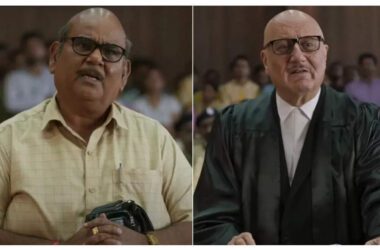To place a needle on a Hindi vinyl record from the 1950s is to initiate a conversation with history. The period spanning the 1950s to the 1970s is universally regarded as the Golden Era of Hindi cinema music, a time of unprecedented creative ferment that produced a catalog of work which continues to define the sound of India. Experiencing this era through its original vinyl pressings is not merely an act of nostalgia; it is the most authentic way to understand the technical and artistic evolution that made this period so extraordinary. The vinyl record was the primary medium of its time, and in its grooves, we can trace the entire narrative of this musical renaissance.
The 1950s established the foundational grammar of Hindi film music. This was the era of the monumental composer, figures like Naushad who built soundscapes of classical grandeur. Listening to the soundtrack of “Mughal-e-Azam” on LP is to hear a composer working on an operatic scale. The orchestra was large, the arrangements were complex, and the focus was on melodic purity and lyrical depth. The voices of Lata Mangeshkar and Mohammed Rafi achieved their technical zenith, their flawless vocals serving the composition with selfless perfection. On vinyl, the warmth of the analog recording captures the full resonance of the shehnai, the depth of the tabla, and the soaring clarity of the violins, creating a sound that is both majestic and intimately human. This decade also saw the rise of the charismatic everyman, with Raj Kapoor’s films and Shankar-Jaikishan’s music creating timeless anthems like “Shree 420,” where social commentary was seamlessly woven into catchy, folk-inspired melodies.
As the nation moved into the 1960s, the music began to reflect a new sophistication and a shifting social landscape. The influence of Western pop and jazz began to seep into the compositions, but it was a fusion, not an imitation. This was the dawn of the playback singer as a distinct superstar, with the meteoric rise of Kishore Kumar post-“Aradhana” challenging the established order. The vinyl singles and LPs from this period showcase a growing confidence in experimentation. Composers like S.D. Burman crafted soundtracks like “Guide” that were nuanced and deeply integrated with the film’s narrative, their emotional complexity best appreciated when listened to as a complete album on vinyl.
This experimental spirit exploded into full-blown revolution in the 1970s, largely driven by the genius of R.D. Burman. This decade represents the peak of the vinyl era for Hindi music, and the records from this time are a collector’s paradise. Burman, along with lyricists like Gulzar, dismantled the old structures and rebuilt them with a new, infectious energy. The sound was now a global fusion—the funk basslines of “Yeh Jawaani Hai Deewani,” the rock guitar riffs in “Yeh Jo Mohabbat Hai,” and the psychedelic swirl of “Dum Maaro Dum.” On vinyl, these innovations are rendered with a punch and texture that digital formats often soften. The bass is deeper, the drums are sharper, and the playful experimentation in the arrangements is laid bare. This was the era of the individualistic, rebellious hero, and the music, carried by the distinct voices of Kishore Kumar and Asha Bhosle, mirrored this new persona with its boldness and unpredictability.
A retrospective through vinyl reveals this evolution with unmatched clarity. The journey from the classical orchestration of Naushad to the jazz-inflected rhythms of Shankar-Jaikishan, and finally to the genre-bending rock-and-roll of R.D. Burman, is a journey captured in the changing sound of the records themselves. The vinyl format, with its physicality and warmth, preserves not just the music but the atmosphere of each recording session. The slight crackle that accompanies a playable 1950s 78 RPM shellac disc tells a different story than the crisp, full-frequency range of a 1970s Polydor LP. To collect these records is to build a living museum of this golden age, where each disc is a chapter in the story of how Hindi film music found its voice, its swagger, and its timeless soul.









